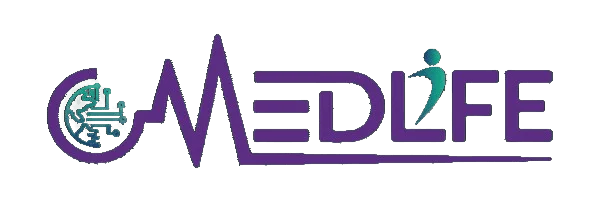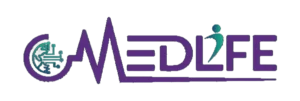11 Challenges in Medical Billing and the Path to Solutions: A Comprehensive Guide
Medical billing is the foundation of healthcare’s financial ecosystem, ensuring providers receive timely and accurate payments for their services. Despite its critical role, the process is fraught with challenges that can disrupt cash flow, hinder compliance, and even impact patient satisfaction. With evolving regulations, technological advancements, and increasing complexity in coding and documentation, overcoming these hurdles is essential for healthcare providers and billing companies alike.
This comprehensive guide addresses the 11 most common challenges in medical billing and offers actionable solutions to transform these obstacles into opportunities for growth and efficiency.
1. Ever-Changing Regulatory Landscape
The Challenge:
Healthcare regulations are in constant flux. Changes like the shift from ICD-9 to ICD-10 or updates to the Affordable Care Act (ACA) demand continuous adaptation. Failure to comply can lead to hefty fines, denied claims, or reputational damage.
The Solution:
- Continuous Education: Regular training programs for billing staff ensure they remain updated on the latest changes.
- Compliance Teams: Establish dedicated compliance teams to monitor regulatory updates and implement necessary adjustments.
- Automated Tools: Leverage technology that auto-updates billing codes and aligns processes with current regulations.
2. Billing Errors and Denials
The Challenge:
Errors in medical billing, such as incorrect codes or incomplete patient information, are the leading cause of claim denials. Each denial represents lost revenue and added administrative work.
The Solution:
- Comprehensive Documentation: Ensure detailed and accurate documentation of patient visits.
- Pre-Billing Audits: Implement a multi-tier review system to catch errors before claims are submitted.
- AI-Driven Tools: Use AI-powered billing software to flag potential errors and inconsistencies automatically.
Did You Know?
The average denial rate in medical billing is around 10%, but organizations using robust denial management systems have reduced this to less than 5%.
3. Insurance Verification Challenges
The Challenge:
Incomplete or incorrect insurance verification often results in claim rejections, delayed payments, and frustrated patients.
The Solution:
- Real-Time Verification Systems: Integrate systems that connect directly to insurance databases to verify coverage instantly.
- Standardized Protocols: Establish clear procedures for insurance checks at registration and prior to service delivery.
- Transparent Communication: Inform patients upfront about potential out-of-pocket costs to avoid surprises later.
4. Technological Gaps
The Challenge:
Outdated systems and lack of interoperability between billing, EHR, and patient engagement platforms slow down processes and increase errors.
The Solution:
- Invest in Modern Systems: Upgrade to integrated platforms that combine EHR, billing, and revenue cycle management functions.
- Customization: Use software tailored to your practice’s specialty to eliminate unnecessary features and optimize efficiency.
- Vendor Support: Partner with vendors offering robust training and customer support during implementation.
5. Staffing Shortages
The Challenge:
The healthcare industry faces a shortage of skilled medical billers and coders. High turnover rates and intense competition for talent compound this problem.
The Solution:
- Flexible Work Models: Offer remote work opportunities to attract a wider talent pool.
- Ongoing Training: Provide clear paths for professional growth and certification renewal to retain staff.
- Automated Solutions: Use automation for repetitive tasks, reducing the workload on human resources.
6. Data Security and HIPAA Compliance
The Challenge:
Medical billing involves handling sensitive patient information, making it a prime target for cyberattacks. Non-compliance with HIPAA regulations can result in severe penalties.
The Solution:
- Encryption and Access Controls: Secure data with encryption protocols and role-based access.
- Regular Audits: Conduct frequent security assessments to identify and mitigate vulnerabilities.
- Employee Training: Educate staff about data protection practices and compliance requirements.
7. Denial Management Inefficiencies
The Challenge:
Inefficient denial management leads to delayed reimbursements and increased workload, impacting the financial health of a practice.
The Solution:
- Advanced Denial Tracking: Use denial management software to categorize and analyze reasons for denials.
- Appeals Process Optimization: Develop a streamlined process for appealing denied claims promptly.
- Proactive Prevention: Address common denial causes, such as missing documentation or mismatched codes, to reduce recurrence.
8. High Operational Costs
The Challenge:
Running an in-house billing department involves significant expenses, from salaries and training to technology upgrades.
The Solution:
- Outsourcing: Partner with professional medical billing services to reduce overhead while maintaining efficiency.
- Lean Operations: Eliminate redundant processes and focus resources on core billing activities.
- Scalable Solutions: Adopt technology that can grow with your practice, reducing the need for frequent upgrades.
9. Patient Engagement and Education
The Challenge:
Patients often struggle to understand their bills, leading to delayed payments and dissatisfaction.
The Solution:
- Simplified Statements: Provide clear, itemized bills that explain charges and insurance coverage.
- Flexible Payment Options: Offer online portals, installment plans, and mobile payment solutions.
- Educational Resources: Use digital tools, brochures, and videos to help patients navigate their financial responsibilities.
Fact:
Educated patients are 50% more likely to make timely payments when they understand their bills and payment options.
10. Resistance to Change
The Challenge:
Staff accustomed to traditional methods may resist adopting new technologies or workflows, hindering efficiency improvements.
The Solution:
- Inclusive Planning: Involve staff in decision-making when selecting and implementing new systems.
- Gradual Rollouts: Implement changes incrementally to minimize disruption.
- Hands-On Training: Provide interactive training sessions to build confidence in using new tools.
11. Slow Reimbursement Cycles
The Challenge:
Delays in insurance reimbursements can create cash flow problems, impacting a practice’s ability to operate smoothly.
The Solution:
- Accurate Documentation: Ensure all required documentation is submitted with the claim.
- Automated Follow-Ups: Use billing systems that track claims and send reminders for unpaid balances.
- Payer Collaboration: Maintain open lines of communication with insurers to resolve disputes quickly.
Key Takeaways for Solving Medical Billing Challenges
- Embrace Technology: Use integrated platforms to streamline workflows and reduce errors.
- Invest in Training: Equip staff with the skills to handle evolving regulations and tools effectively.
- Partner Strategically: Outsource billing services when in-house resources are limited.
- Focus on Patients: Prioritize transparency and education to enhance patient satisfaction.
- Leverage Automation: Automate repetitive tasks to reduce administrative burdens and improve accuracy.
Elevate Your Medical Billing Service Today!
Conclusion: Turning Challenges into Opportunities
Medical billing is complex, but with the right support, these challenges can become opportunities for growth. MedLife offers comprehensive medical billing services, including accurate coding, claims management, denial resolution, and patient billing, designed to optimize your revenue cycle and reduce costs. Partner with MedLife to streamline your billing process, enhance compliance, and focus on delivering exceptional care while we handle the rest.


